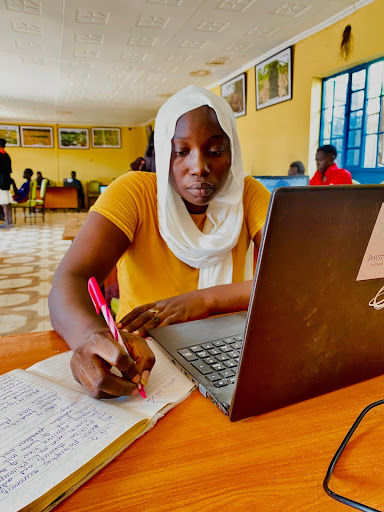Refugee Youths Need Vocational Training More Than Ever.
- Gloria Mairura

- Jul 17, 2020
- 3 min read
Vocational training is one of the best ways to bridge the gap of unemployment amongst refugee youths. It is estimated that the level of education goes hand-in-hand with the refugee’s employment status, business ownership, and income in Kakuma (Resilience Action International, 2019).
According to previous studies conducted by IFC, refugees with education and training have the highest chances of gaining employment (IFC, 2018). Likewise, experience and skills also increase employment prospects for these groups of educated people within and outside the camp.
As shown by (IFC, 2018) statistics, 65% of unemployed people in the Kakuma refugee camp have no formal education. On the other hand, uneducated business owners and self-employed people in the camp make up only 33% of the total population, indicating how important entrepreneurial skills are in the absence of formal education. With the right vocational training, we can turn 65% into a productive group by polishing their technical skills.

Above all, RAI is putting its best foot forward in training more female workers in vocational programs. This is because the majority of women in the Kakuma refugee camp have no jobs or businesses. It is estimated that unemployed women in Kakuma make up about 73% of the total population (IFC, 2018). Also, this group has lower levels of education compared to their male counterparts in the region. Therefore, to even the field, we encourage more women in the community to join vocational training schools to bridge the gender gap in business fields.
With international and local support, RAI offers globally accepted vocational training programs for refugee youths in Kakuma. The main objective of these programs is to restore the self-sufficiency of refugee youths.
Furthermore, the vocational training classes are designed to complement the learner’s hands-on skills with additional academic knowledge on the field. Hence, producing an all-round candidate able to work, and adapt to the technological evolution in workplaces.
In reference to our 2019 annual report, we have trained 687 youths through Education for the Livelihood program (edLive). The focus areas were the English Language for Career Success and Academic advancement, Small- business start-up, Tailoring, and Fashion Design, and Digital Literacy. These courses add market-oriented skills which cannot be obtained from the local school system. The majority of our trainees have started small businesses within their areas, while the rest have been recruited by employers.
Despite vocational training not being a quick fix to the unemployment issue in the Kakuma refugee camp, it can definitely reduce the poverty gap. Our vocational courses allow refugees to complement their formal education with basic financial concepts needed to start a business or join a workforce.
Regrettably, the majority of households in Kakuma have no basic financial concept. Worse, Business studies, one of the crucial subjects taught in the Kenyan high school curriculum is not taught in most of the schools in the camp. Hence, the refugee youths are unable to maintain or build a business within the camp (IFC, 2018). For this reason, we recommend refugees to join trade schools soon after secondary school- a perfect option for youths attending a community college. Or, choose a non-degree option by enrolling in stand-alone courses offered by vocational training schools.
In conclusion, youth’s entrepreneurial skills and employment eligibility can be highly improved with quality vocational training in both technical and non-technical fields.
Sources:
IFC. (2018). KAKUMA AS A MARKET PLACE. N.W. Washington, D.C.: International Finance Corporation [2018].
Resilience Action International. (2019). Annual Report 2019. Turkana West: www.resilienceaction.net.



Comments